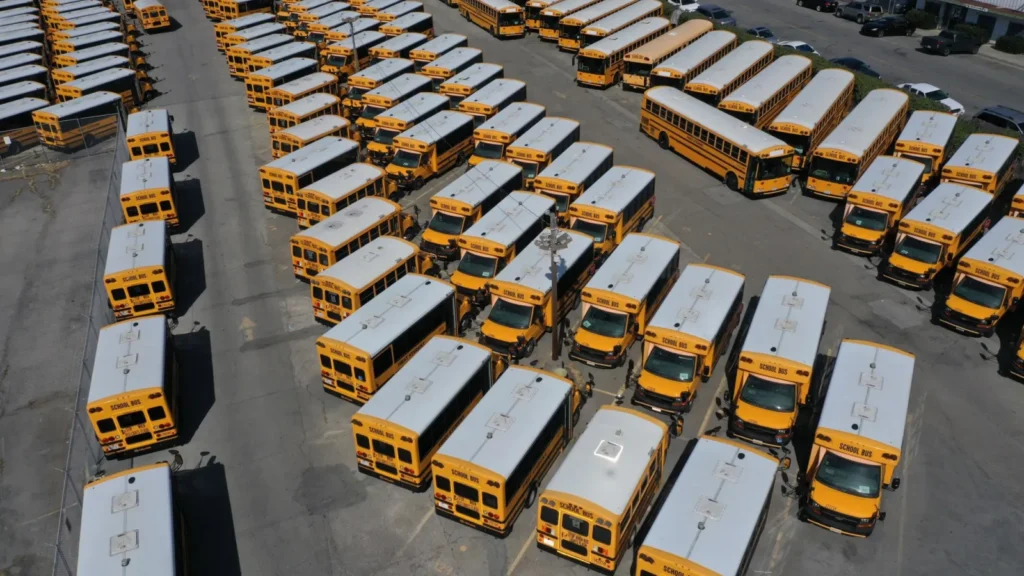California has awarded $500 million to educational agencies to deploy 1,000 zero-emission school buses across the state. The initiative, announced by the California Air Resources Board (CARB) and the California Energy Commission (CEC), positions the Golden State as a national leader in sustainable student transportation.
The funding, administered by the nonprofit CALSTART, will supply both the new electric buses and the necessary charging infrastructure, advancing California’s goal to achieve carbon neutrality by 2045.
Zero-Emission School Buses: Driving Toward a Healthier Future
The new funding falls under the Zero-Emissions School Bus and Infrastructure (ZESBI) project, which prioritizes communities that suffer disproportionately from air pollution. According to officials, 98% of the grant recipients serve low-income or disadvantaged areas, ensuring the benefits of cleaner air reach the students who need it most.
“Cleaning up the state’s school bus fleet is central to California’s efforts to provide clean transportation in priority communities,” stated CARB Chair Liane Randolph.
Meanwhile, CEC Chair David Hochschild noted the project supports California’s broader efforts to phase out internal combustion vehicles from its roads.
Cleaner Buses, Cleaner Air: The Public Health Impact
Research shows that although students spend less than 10% of their day on school buses, exposure to pollutants during that time can account for up to 33% of their daily intake of harmful air particles when riding diesel-powered buses. The switch to electric vehicles promises a dramatic reduction in these risks.
The expected impact is significant: these new buses are projected to cut 18,000 metric tons of greenhouse gas emissions annually, comparable to removing over 4,000 cars from California roads each year.
Prioritizing Communities That Need It Most
Awardees of the program will receive up to $375,000 per bus for replacing older diesel models, plus an additional $95,000 for each charging station installed. However, one old internal combustion bus must be scrapped for every new zero-emission bus purchased, a strategic move to ensure tangible emissions reductions.
Priority was given to small and rural school districts, along with agencies where large portions of students qualify for free or reduced-price meals, are in foster care, or are English-language learners.
California’s Growing Electric Fleet
This $500 million grant builds upon California’s previous investments. To date, the state has funded more than 2,300 zero-emission school buses, with 1,100 already on the roads. Over 70% of these vehicles operate in communities burdened by the highest levels of pollution.
Several school districts have gone a step further, transitioning their fleets entirely to zero-emission vehicles, setting a powerful example for the rest of the nation.
Setting the National Standard
With ongoing programs like ZESBI, California continues to blaze a trail toward a cleaner, greener future, transforming not just how students travel, but also the air they breathe.
As other states watch California’s bold strides, the message is clear: the future of school transportation is electric, equitable, and emission-free.

